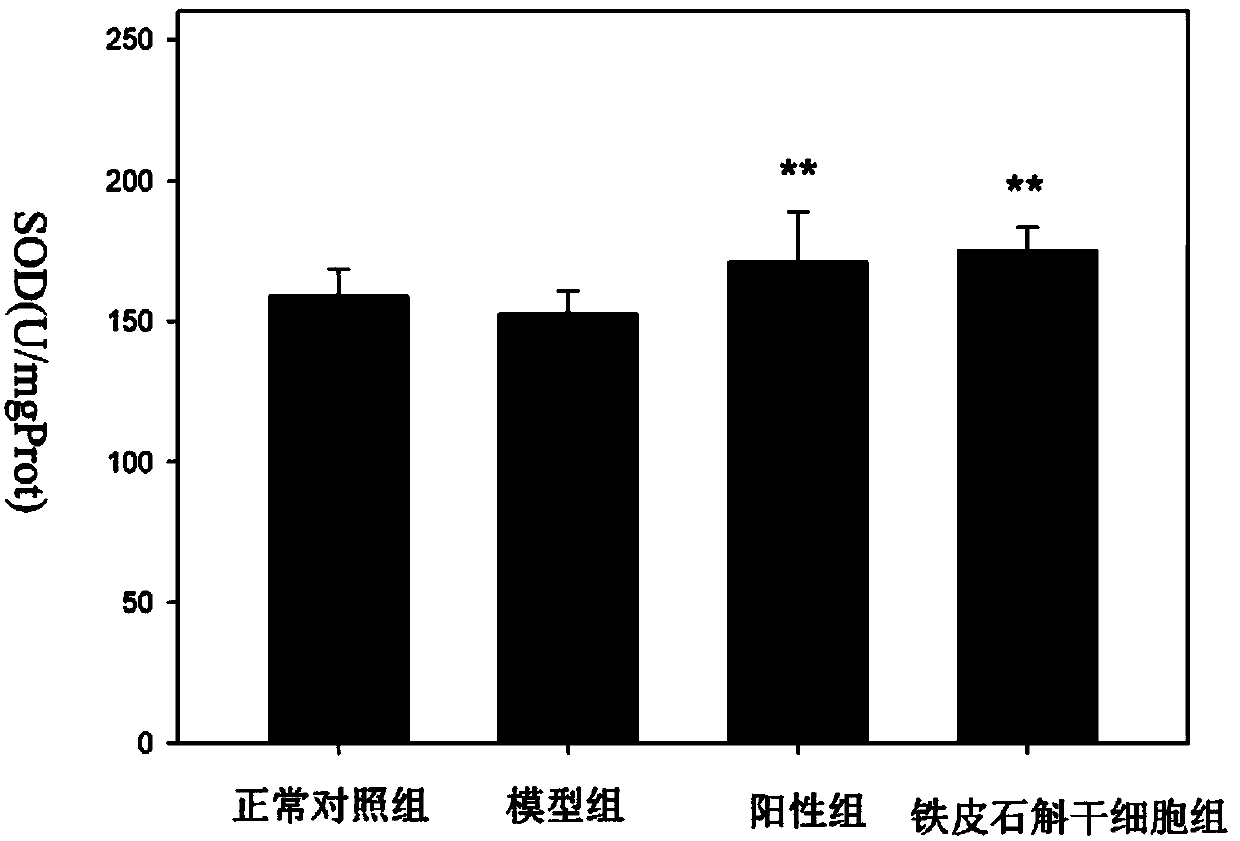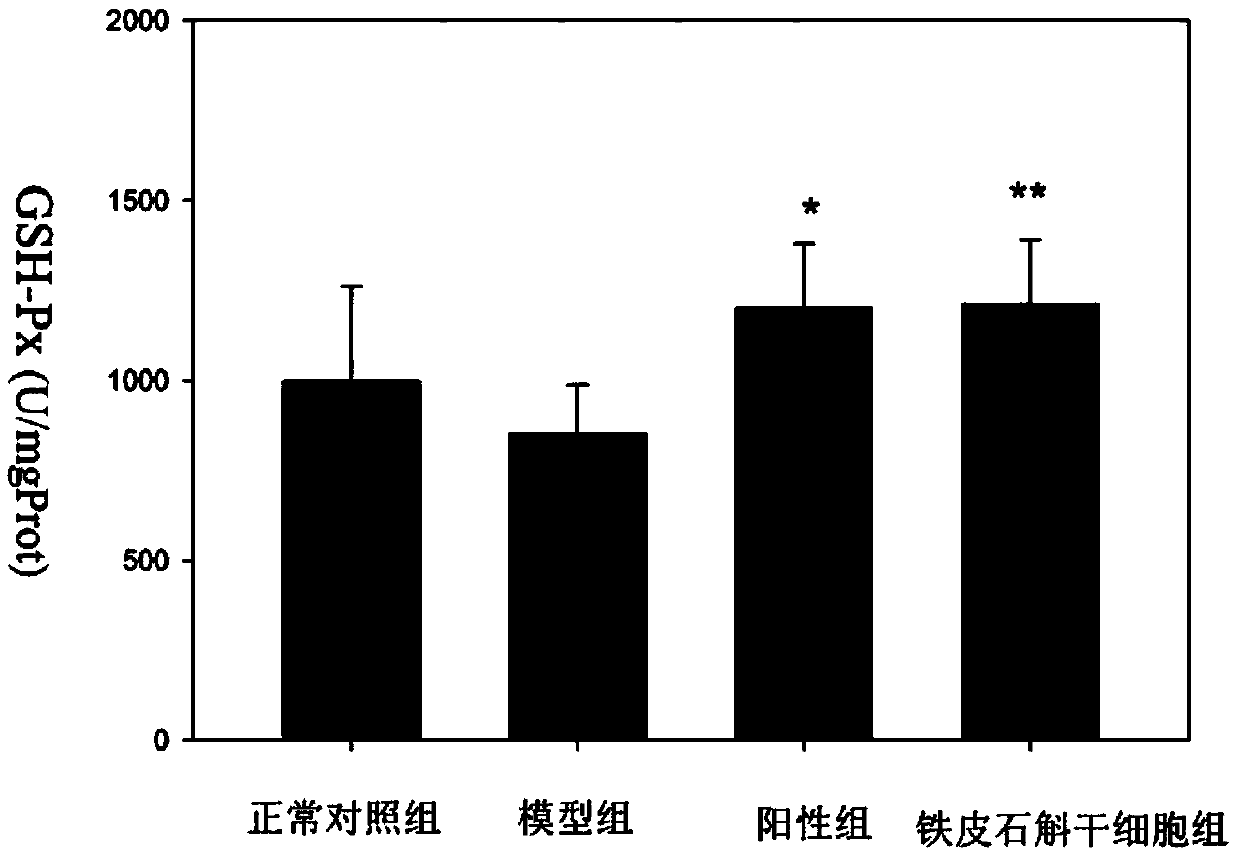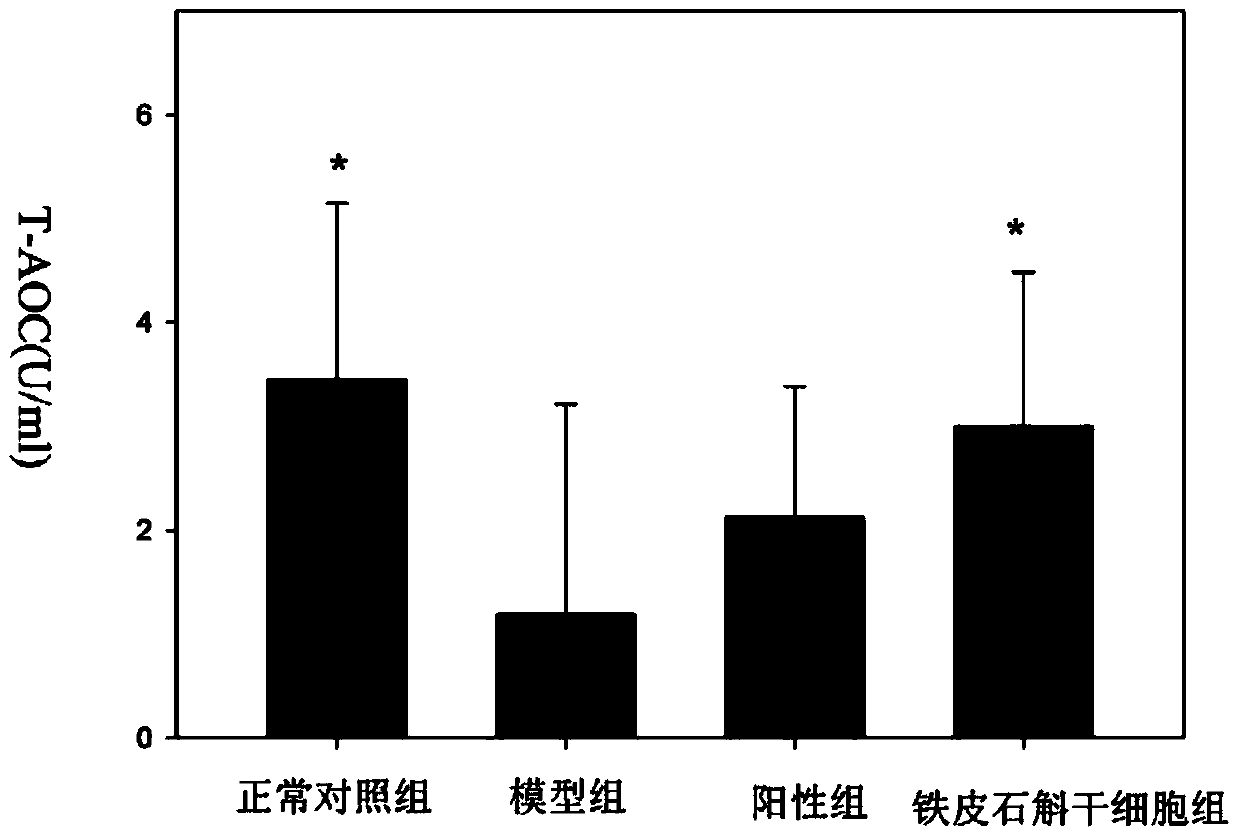Dendrobium officinale stem cell and isolated culture method thereof
A technology of separation and culture of Dendrobium officinale, applied in plant cells, skin diseases, pharmaceutical formulations, etc., can solve the problems of few successful cases of industrialization, and achieve the effects of short culture time, strong cell activity, and easy operation of technical processes
- Summary
- Abstract
- Description
- Claims
- Application Information
AI Technical Summary
Problems solved by technology
Method used
Image
Examples
Embodiment 1
[0048] The method for isolating and culturing stem cells of dendrobium officinale comprises the following steps:
[0049] (1) Induction and isolation of cell lines from the quiescent center of Dendrobium officinale
[0050] Collect the aseptic root tip containing the quiescent center of the Dendrobium officinale plant, remove the root cap, cut the 1mm length from the incision as an explant, put the explant into the N6 induction medium, and add 2mg / L2,4- D, the culture temperature is 25±1°C, and after 40 days of culture, the quiescent central stem cells are naturally separated from other root tissue cells due to their differences;
[0051] (2) Subculture and scale-up culture of Dendrobium officinale stem cells
[0052] 2-1 Subculture of Dendrobium candidum stem cells
[0053] Use the inoculation spatula to transfer the stem cells induced in step (1) into the liquid culture medium (N6 medium) in the flask, the pH value is 5.8, and cultivate in a controlled darkroom with a rota...
Embodiment 2
[0061] Effect of Dendrobium candidum stem cells on subacute aging mice induced by D-galactose
[0062] 1. Experimental materials:
[0063] 1.1 Drugs and reagents: Dendrobium candidum stem cell dry powder; superoxide dismutase (SOD) kit, 100T, Nanjing Jiancheng Bioengineering Research Institute, batch number: 20101009; glutinous glutinous peroxidase (GSH-Px) test kit, Nanjing Jiancheng Bioengineering Research Institute, batch number: 20101008; total antioxidant capacity (T-AOC) assay kit, 50T, Nanjing Jiancheng Bioengineering Research Institute, batch number: 20101013.
[0064] 1.2 Experimental animals: SPF grade KM mice, body weight (20±2) g, half male and half male, provided by the Experimental Animal Center of Guangzhou University of Traditional Chinese Medicine, certificate number: SCXK (Guangdong) 2008-0020.
[0065] 2. Experimental method
[0066] 2.1 Modeling: Take adult mice weighing 20±2g, half male and half male. The animals were randomly divided into 4 groups, nam...
Embodiment 3
[0074] The Effect Test on the Levels of Sex Hormone and Hepatocyte Growth Factor in Rats with Seborrheic Alopecia
[0075] 1. Experimental materials
[0076] 1.1 Drugs and reagents: Dendrobium candidum stem cell dry powder; testosterone propionate (Hubei Yuancheng Group Yuancheng Pharmaceutical Co., Ltd., batch number: 20100705); serum testosterone (ELISA kit), purchased from Guangzhou Qiyun Biotechnology Co., Ltd., production batch number E02T0007; Estradiol (E2) ELISA kit, purchased from Guangzhou Qiyun Biotechnology Co., Ltd., production batch number: E02E0023; hepatocyte growth factor ELISA kit, purchased from Guangzhou Qiyun Biotechnology Co., Ltd., production batch number : E02H0208; heparin sodium, Shanghai Yuanju Biotechnology Co., Ltd., production batch number: 20090124; Arowana peanut oil, Yihai Kerry Food Marketing Co., Ltd.; 0.9% sodium chloride injection, Shandong Lukang Chenxin Pharmaceutical Co., Ltd., Production batch number: 1004234202.
[0077] 1.2 Experime...
PUM
 Login to View More
Login to View More Abstract
Description
Claims
Application Information
 Login to View More
Login to View More - R&D Engineer
- R&D Manager
- IP Professional
- Industry Leading Data Capabilities
- Powerful AI technology
- Patent DNA Extraction
Browse by: Latest US Patents, China's latest patents, Technical Efficacy Thesaurus, Application Domain, Technology Topic, Popular Technical Reports.
© 2024 PatSnap. All rights reserved.Legal|Privacy policy|Modern Slavery Act Transparency Statement|Sitemap|About US| Contact US: help@patsnap.com










